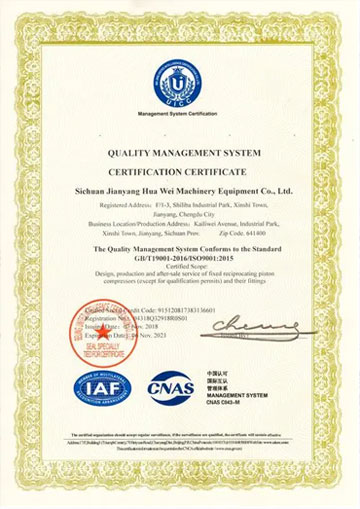

astm a325 bolts
Dec . 26, 2024 05:54 Back to list
astm a325 bolts
Understanding ASTM A325 Bolts A Comprehensive Overview
Bolts play a crucial role in construction and manufacturing, serving as the essential fasteners that hold various components together. Among the myriad types of bolts used in structural applications, ASTM A325 bolts stand out for their strength, reliability, and versatility. This article aims to provide an in-depth understanding of ASTM A325 bolts, including their specifications, applications, and installation considerations.
What are ASTM A325 Bolts?
ASTM A325 is a standard specification developed by the American Society for Testing and Materials (ASTM) that covers structural bolts for use in construction. These bolts are primarily designed for use in steel structures and are commonly utilized in projects such as bridges, buildings, and towers. The ASTM A325 specification includes various grades of bolts, which are characterized by their material properties and mechanical strength.
The A325 bolts are typically made of medium carbon steel, which enhances their strength characteristics. They can be heat-treated to further improve their properties, particularly when used in high-stress environments. The initial standard was established to address the need for high-strength fasteners capable of withstanding significant loads over extended periods.
Specifications and Characteristics
ASTM A325 bolts are available in various sizes and lengths, typically ranging from 1/2 inch to 1 inch in diameter. The bolts are classified into two main categories Type 1 and Type 3.
- Type 1 Bolts These bolts are made from carbon steel and are often coated with a protective layer, such as zinc, to enhance their corrosion resistance. They are suitable for most structural applications where exposure to the elements is a concern but not extreme. - Type 3 Bolts These are also made from carbon steel but are specifically designed for use in environments susceptible to corrosion. Type 3 A325 bolts undergo additional processing to ensure they meet more stringent corrosion resistance requirements. They are often used in areas exposed to harsh environmental conditions, such as coastal regions or chemical plants.
Mechanical Properties
The mechanical properties of ASTM A325 bolts are critically important, as they are designed to bear heavy loads. The yield strength of A325 bolts typically ranges from 120 to 150 ksi (kilo-pounds per square inch), which translates to exceptional tensile strength and durability. Additionally, the specification dictates precise requirements for elongation, reduction of area, and impact resistance, ensuring that the bolts can withstand dynamic and static loads without failure.
Applications
ASTM A325 bolts are primarily used in structural applications
. Their typical applications includeastm a325 bolts

- Bridges A325 bolts are crucial in bridge construction, where they are used to connect girders, beams, and other structural elements that must endure heavy loads and stresses.
- Buildings In high-rise buildings, A325 bolts facilitate the connection of steel frames, ensuring structural integrity and safety.
- Towers Communication towers and other tall structures often rely on A325 bolts to maintain stability, especially in high-wind conditions.
Installation Considerations
Proper installation of ASTM A325 bolts is essential to achieve their intended strength and performance characteristics. Several factors must be considered during the installation process
1. Torque The correct torque values specified in the ASTM A325 standard must be followed to ensure that bolts are tightened sufficiently without being over-tightened, which can lead to deformation or failure.
2. Bolt Orientation Care should be taken to align the bolts correctly to avoid shear or tension failure. The orientation can also impact the overall load distribution in the assembly.
3. Joint Design The design of the connection joints must accommodate the specific load requirements and material types involved. Proper design helps in distributing forces evenly across the bolts.
4. Inspection and Quality Control Regular inspection should be conducted to ensure that bolt integrity is maintained over time, particularly in load-bearing applications.
Conclusion
ASTM A325 bolts are a vital component in structural engineering, providing strength and safety in various applications. Understanding their specifications, mechanical properties, and correct installation practices is crucial for engineers and builders. When utilized correctly, A325 bolts not only enhance the durability of structures but also provide peace of mind that the connections will withstand the test of time and challenging conditions.
Latest news
-
High-Strength Hot Dip Galvanized Bolts - Hebei Longze | Corrosion Resistance, Customization
NewsJul.30,2025
-
Hot Dip Galvanized Bolts-Hebei Longze|Corrosion Resistance&High Strength
NewsJul.30,2025
-
High-Strength Hot-Dip Galvanized Bolts-Hebei Longze|Corrosion Resistance&High Strength
NewsJul.30,2025
-
Hot Dip Galvanized Bolts-Hebei Longze|Corrosion Resistance&High Strength
NewsJul.30,2025
-
Hot Dip Galvanized Bolts - Hebei Longze | Corrosion Resistance, High Strength
NewsJul.30,2025
-
High-Strength Hot Dip Galvanized Bolts-Hebei Longze|Corrosion Resistance, Grade 8.8
NewsJul.30,2025

